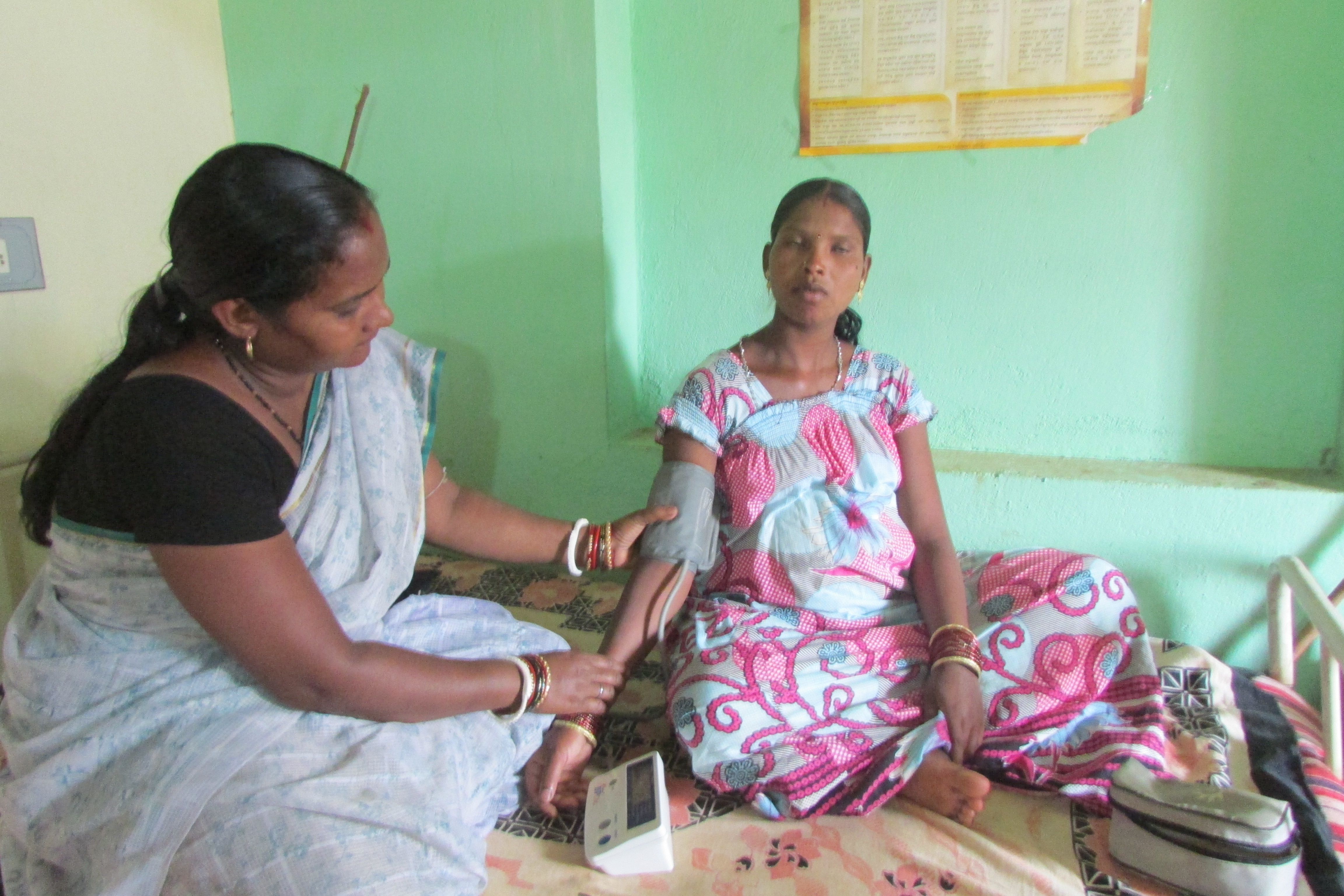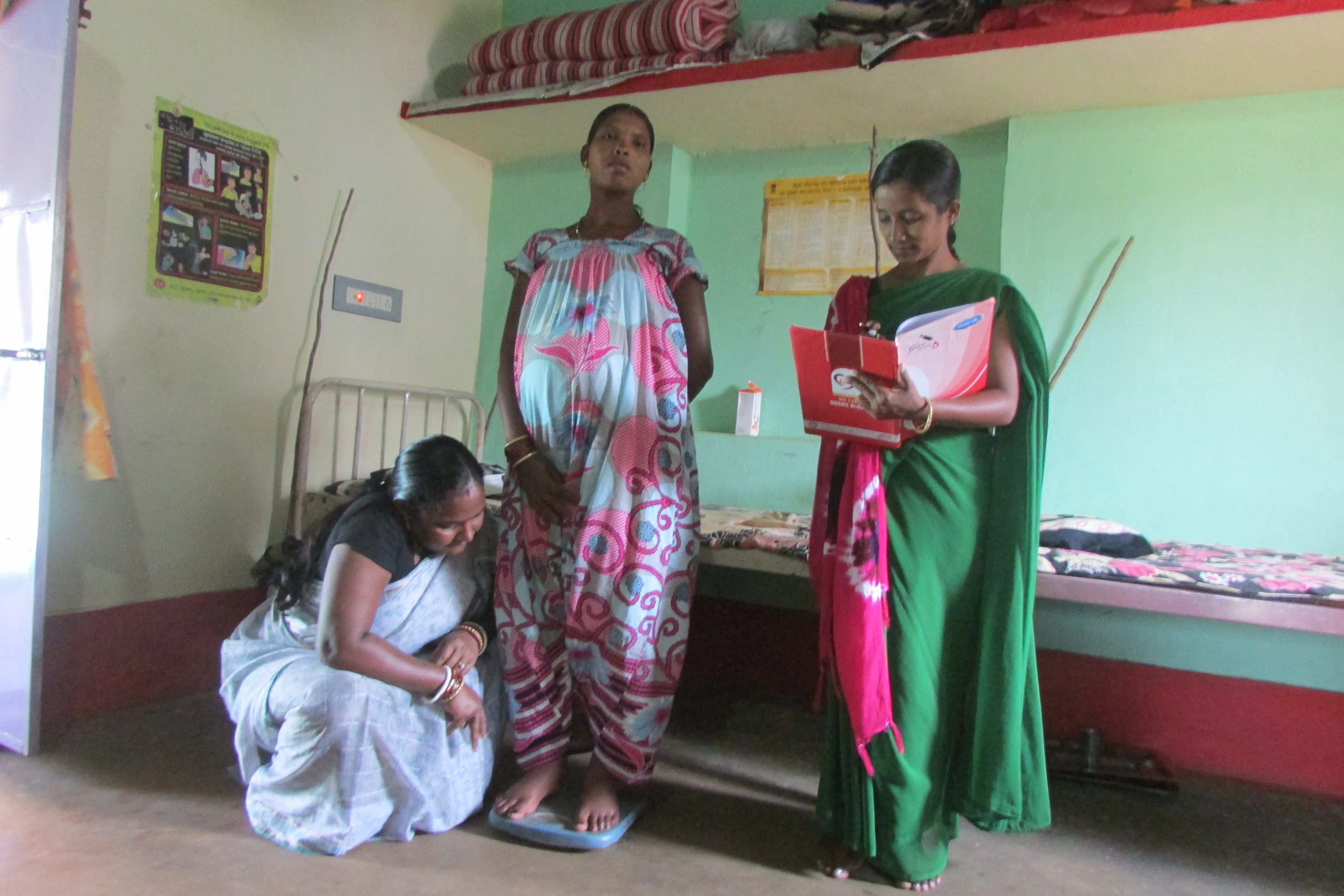A Maternity Home Set up in an Odisha Village Delivers Safety and Good Health
The tribal community has become more conscious of women’s health issues and is open to the idea of institutional delivery now.

Tribals are slowly embracing the maternity homes set up in Koraput district in Odisha.
In a bid to convince expectant mothers in her village to shift into the maternity home that has come up near their Tunkhal village, in Dasamantpur block of Odisha’s Koraput district, 28-year-old Rashmita says, “Go stay at the special home, the lady health assistants will take care of you and you will deliver a healthy baby.” She wants to ensure that the tribal women get the care and nutrition they need to deliver healthy children.
The maternity home has been set up by the Society for Health Education and Development (SHED), a local non-government organisation, with the support of National Rural Health Mission (NHM).
Rashmita, a Paraja tribal woman, has become quite the maternal health champion these days, despite the fact that when she was having her baby last year, their village Accredited Social Health Activist (ASHA) Chanchala Chetly had to use all of her powers of persuasion to get her to move into the facility, even though she was quite frail and unwell.
During her advanced stage of pregnancy, when the young woman came to the anganwadi for a checkup on the Village Health Nutrition Day (VHND), Chetly found her to be dangerously anaemic. When she told Rashmita and her family elders that it would be in her best interest to shift into the maternity home till her delivery, they were not very keen.
“It was only after I repeatedly spoke to her husband and the family elders that they allowed her to come to the maternity home just a few days before her due date,” reveals Chetly.
It turned out to be a prudent decision taken just in time. Sandhyarani Jena, coordinator at the Dasamantpur block maternity home, recalls, “When Rashmita came to us she was weak. We first took her for a thorough checkup at the government community health centre (CHC). Thereafter, in consultation with the attending doctor we gave her folic acid and calcium tablets regularly, besides ensuring that she was fed nutritional meals and took lots of rest.”
Rashmita eventually gave birth to a healthy infant and since then she is convinced that women must take particular care during pregnancy and definitely go in for institutional delivery. In fact, this busy mother takes out time from her otherwise packed day to reach out to expectant mothers in the area advising them to eat right, take it easy and stay in touch with the government health workers for their routine checkup.
According to Rashmita, the presence of the maternity home in the vicinity of their village is a blessing for the women because now they have “somewhere to go where they can get proper help and attention from professional health assistants”.
SHED established two maternity homes – one each at Dasamantpur and Narayanpatna blocks – in Koraput district in 2013.

Ashwini Kumar Panigrahi, Deputy Director, SHED, says, “The idea behind creating the homes is to provide care, nutrition and counselling to expectant tribal mothers, who may be anaemic or suffering from other related complications, without even being aware of them. Generally, due to inaccessibility, the women are unable to get adequate medical help or go for institutional delivery. Once they are at the maternity home, where we keep them from seven to 25 days depending on their condition and doctor’s advice, they are assured of having safe delivery at the government facility.”
Of course, initially getting them to come in was a tough challenge. Pushpanjali Praharaj, the health assistant stationed at Dasamantpur Maternity Home, shares, “In the tribal villages, women do all the household chores, go into forest to collect wood and other produce, and also work at the nearby farms to earn a little money. And they do all this right till the day of their delivery and resume their duties soon after. So, family members were always hesitant to send the woman to the maternity home to stay for a few days.” Jena adds, “These women are resilient and go on working without complaints. However, in the absence of nutritional food and sufficient rest they become extremely vulnerable to developing serious complications. Apart from the obvious apprehension about who would do all the work in their absence, the families had other fears. They preferred to conduct child birth at home because they were worried about things like c-sections.”
Fortunately, the community has become more conscious of women’s health issues and is open to the idea of institutional delivery.

“It has taken a lot of hard work and effort to get to this point. We start off by persuading the husband because once he is convinced that the move is good for both mother and child he does find a way to get the other members to agree. Moreover, families have gradually realised that if a pregnant woman is staying at the maternity home then her responsibility till delivery is entirely on us. In these parts, reaching a hospital on time is always hard. There have been instances when the ambulance was unable to reach the village due to the undulating terrain and the woman, being transported in a cot, passed away during the journey. Increasingly, they are more comfortable with sending them here as they know nothing untoward will happen,” elaborates Kabita Bisoi, Praharaj’s colleague at Dasamantpur Maternity Home.
Like Rashmita, 20-year-old Renuka Kandhapan of Gadikhal village considers herself lucky to have had the option of going to the maternity home. She, too, was anaemic and ill when she was admitted.
“Yet, within a couple of days I was feeling better. At the home, the health assistant monitors the blood pressure and weight every day and then takes the women to the CHC for checkup at least once a week. This is aside from the regular meals and walks twice a day,” she says. Kandhapan stayed for 17 days and had a healthy baby.
While 350 mothers have been admitted at the maternity home in Dasamantapur so far, the numbers are lesser – 165 – at Narayanpatna block. But there is a definite rise in institutional deliveries in the area. For instance, in Boriguda village, these days, nearly 70 per cent women have openly declared a preference for institutional delivery. And the credit for this changed outlook is being given to female health workers like Chanchala Chetly, Kabita Bisoi, and Pushpanjali Praharaj.
“If one converses with them in their own tribal language they instantly respond and are eager to follow the suggestions given. After all, at the end of the day every woman wants a safe delivery and a healthy child. Like Rashmita and Renuka, when tribal women from various hamlets deliver healthy children in a hospital, it helps us motivate others to take all the necessary measures needed to avoid any untoward happening. It’s heartening to see that our effort is bettering their lives,” signs off Praharaj.
Featured image source: Flickr/DFID
Like this story? Or have something to share? Write to us: [email protected], or connect with us on Facebook and Twitter (@thebetterindia).

Similar Story

Ex-Google Employee Delivers Healthcare at the Doorsteps of Odisha’s Most Backward Areas
Priyadarshi Mahapatra quit his job at Google to launch CureBay, a healthcare startup that delivers affordable care right at the doorsteps of people living in Odisha’s most backward regions. He shares why he started this endeavour.
Read more >
If you found our stories insightful, informative, or even just enjoyable, we invite you to consider making a voluntary payment to support the work we do at The Better India. Your contribution helps us continue producing quality content that educates, inspires, and drives positive change.
Choose one of the payment options below for your contribution-
By paying for the stories you value, you directly contribute to sustaining our efforts focused on making a difference in the world. Together, let's ensure that impactful stories continue to be told and shared, enriching lives and communities alike.
Thank you for your support. Here are some frequently asked questions you might find helpful to know why you are contributing?


This story made me
-
97
-
121
-
89
-
167












